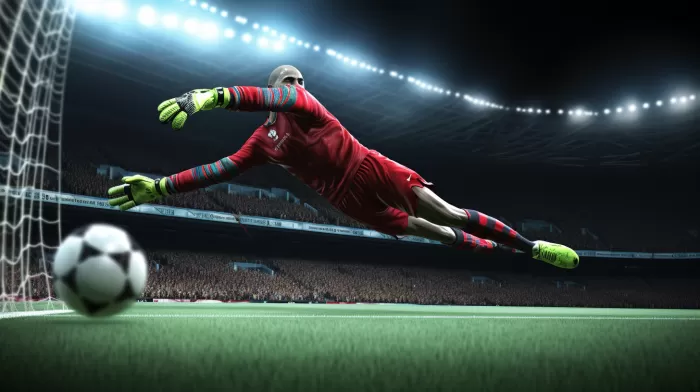It’s fascinating to think about how our emotions can affect our physical movements. Numerous studies have shown that when humans and animals desire something or feel a strong emotion like fear, worry, or love, they tend to move to the right. This intriguing phenomenon can be observed in various situations – from dogs wagging their tails to soccer goalies diving right during a crucial penalty shootout. But why does this happen, and what can we learn from it?
Our Brain and Body Connection
Our emotional state has a profound influence on our physical actions. The human brain is wired in such a way that the left hemisphere controls the right side of the body, while the right hemisphere controls the left side. This anatomical structure, known as ‘lateralization,’ has been the focus of many research studies in neuroscience.
In one interesting study, researchers at the University of Amsterdam examined every penalty shootout in the World Cup from 1982 to 2010. They discovered that soccer goalies tend to dive right when their team is behind and they have an opportunity to become the hero by deflecting the ball. The researchers also conducted an experiment where participants were asked to divide a line in half. When under time pressure and focused on a positive outcome, people tended to aim slightly to the right.
This phenomenon doesn’t just apply to humans. Dogs wag their tails more to the right when they see their owners, indicating a positive emotional state. Likewise, toads are more likely to strike to the right when attempting to catch prey.
The Role of Emotions and Desires
So why are we more likely to move towards the right when experiencing strong emotions or desires? While more research is needed to answer this question fully, it is believed that our brain wiring plays a major role. The left hemisphere, which controls the right side of our bodies, is responsible for processing positive emotions and desires.
In contrast, the right hemisphere deals with negative emotions like fear and sadness. This means that when we’re feeling positive and want something, our left hemisphere is more active, leading us to physically move to the right. Conversely, when we’re feeling negative and want to avoid something, our right hemisphere takes charge and could cause us to move to the left.
Practical Implications
Understanding this fascinating aspect of human and animal behavior can have practical implications. For example, retailers and businesses can consider the direction of their foot traffic when designing store layouts to maximize positive feelings and increase sales. It’s worth noting that this phenomenon might be more subtle in everyday situations, but it could still influence our decisions and emotions.
Moreover, professionals in fields like sports coaching or physical therapy could benefit from understanding how emotions impact physical movements, allowing them to develop more effective strategies for training and rehabilitation. This knowledge could also help athletes to predict their opponents’ moves based on their emotional state.
Lastly, the discovery of rightward bias in emotional situations could even be useful for the world of politics. Research has shown that political candidates displayed on the right side of the ballot paper are more likely to be elected, possibly because voters unconsciously associate the right with positivity and success. Knowing this, politicians may be able to use positioning to their advantage during campaigns.
The Future of Research in Rightward Bias
But despite the interesting findings, more research is needed to fully grasp the complexity of this phenomenon. Future studies may explore variations in the emotional response, such as how age, cultural differences, and individual brain wiring could impact one’s rightward bias. For instance, left-handed individuals or those who come from cultures that read from right to left may exhibit different behavioral tendencies.
Additionally, research could delve deeper into the neuroscience behind the rightward bias by studying brain activity and hormonal responses in real-life emotional situations. This could provide us with an even better understanding of why we move to the right when we feel fear, worry, desire, and love.
In conclusion, it’s clear that our emotions have a significant impact on our physical movements, causing us to move to the right in specific situations. By understanding this fascinating aspect of human and animal behavior, we can better appreciate how our brain and its wiring shape our actions and reactions, ultimately enriching our knowledge of ourselves and the world around us.



